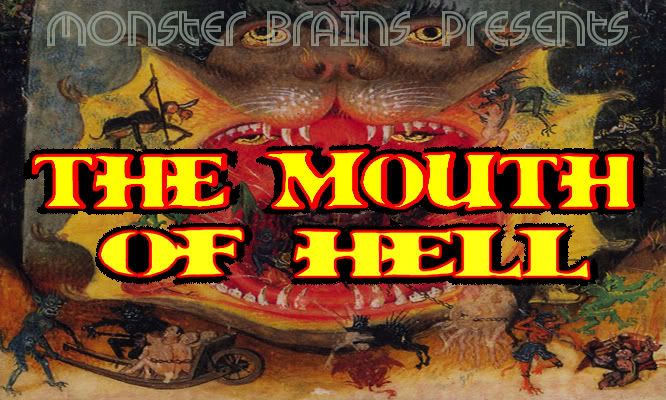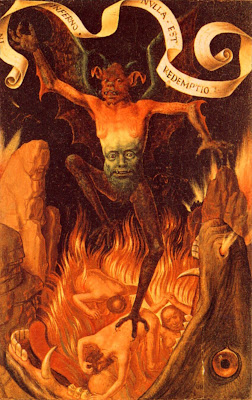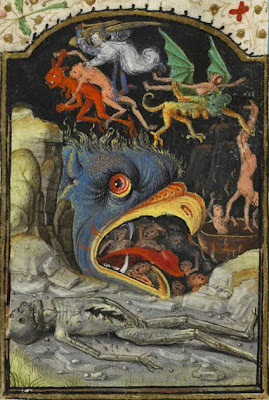
The following paintings, sculptures, engravings and other mediums from centuries past will explore the theme of the mouth of hell. From paintings of Christ in Limbo, The Harrowing of Hell, The Last Judgement, to decorative sculptures showing the hell mouth on display in various churches across Europe, there are many unique and bizarre depictions of this monstrous portal into the inferno.

Last Judgement window, Cathedral Saint-Etienne de Bourges. More pictures of the window can be found here.

Right panel from the Triptych of Earthly Vanity, Hans Memling, 1485.
Here's a link to another Doom painting, and another Hell Mouth.
I haven't seen many sites online focused on the Hell Mouth but I did find this page with a nice variety of photographs, although small, showing various Doom paintings and other works related to the Hell Mouth motif. The Ecclesiological Society, Dooms and the mouth of hell in the late medieval period.
This wraps up the weeklong post on one of my favroite motifs in art. If you dig through the archives here I'm sure you'll find numerous paintings featuring the mouth of hell that I didn't bring up. If you know of any works not mentioned here I'd love to see them, please leave any related links in the comments, thank you!




















































